 Carter Horsley
Carter HorsleyDec 23, 2011
Carter's Review
One of the world's iconic Art Deco skyscrapers, The Waldorf Astoria, which occupied the full block between Park and Lexington Avenues and 49th and 50th Streets, was designed by Schutze & Weaver and erected in 1931.
The Waldorf Astoria and Waldorf Towers offers a total of 1,416 guest rooms and suites, featuring original Art Deco motifs. The Waldorf Towers, offers 181 rooms, including 115 suites, and occupies the 28th through 42nd floors of The Waldorf Astoria.
There are grand hotels and then there's the Waldorf, which moved to this location after its former site was acquired for the Empire State Building.
This and the Chrysler Building and Rockefeller Center are the crown jewels of Art Deco New York. According to his family, the Waldorf was Conrad Hilton's Holy Grail, the ne plus ultra of hotels, that he sought for years to acquire.
The Waldorf Astoria's former site is now occupied by the Empire State Building on Fifth Avenue between 33rd and 34th Streets where the Waldorf Hotel had been built by William Waldorf Astor and named after the German Village from which John Jacob Astor, the founder of the Astor fortune, came, and the Astoria Hotel had been built by Caroline Schermerhorn, William Waldorf Astor's cousin, who had the architect Henry J. Hardenbergh, who also designed the Plaza Hotel, provide for the joined hotels to be separated. The joined hotels were often referred to popularly as the "Hyphen." In 2003, the hotel started using an equal sign rather than a "hyphen" between its names.
In early 2009, the hotel decided to drop the "=" sign in its title.
On November 21, 2006, the Hilton Hotels Corporation sold the 1,245-room hotel at 301 Park Avenue to BH Hotels LLC, a subsidiary of the Blackstone Group that had bought out Hilton in October for about $26 billion.
The hotel is in the base of the building while the top is devoted to the Waldorf Towers apartments, which have their own entrance on 50th Street. The Starlight Roof, which was for many years a major nightclub, is on the top floor of the base fronting Park Avenue.
The hotel's ballroom, the largest elegant ballroom in the city, is four stories high with several major adjoining smaller ballrooms and regularly hosts many of the city's most prestigious benefits and political dinners.
The many and extensive lobbies are not individually sensational, but in the aggregate they are superb in their proportions, scale and richness of materials and finish. The guestrooms, including the large Presidential Suite on the 35th floor, are not up to the level of the public spaces, but are not shabby.
The Park Avenue lobby behind the handsome Art Deco grill above the entrance canopy, is up a broad flight of stairs to a large hall that on one side led up a short flight of stairs to one of the hotel's famous nightclubs. The hall also leads directly into a procession of lobby spaces that run from Park to Lexington Avenues.
In addition to the hotel's front desk and concierge stations, there are lounges, and bars and luxury retail shops on this level as well as on a lower level. A major restaurant, the Bull & Bear, is on the Lexington Avenue frontage and a large private club, the Marco Polo Club is on a mezzanine level at the Lexington Avenue end, where there are separate elevators and coatroom facilities to accommodate those attending functions in the vast ballroom facilities.
For years, the large circular Art Deco mosaic by Louis Rigal in the center of the front Park Avenue lobby's floor was carpeted over, but, thankfully, is now fully exposed as one of the most glorious Art Deco decorations in the city, a detail of which is shown below. Were it not for its pastel colors, one might assume that Art Deco sprung not from Art Nouveau but the great Italian Renaissance master Andrea Mantegna. Of course, the surging fluidity of Art Deco conjures early morning swills of champagne when the lights are dimmed, which they never are here.
The main central lobby, shown below, is nobly scaled and focused on the clock executed by the Goldsmith Company of London for exhibition at the Chicago World's Fair in 1893. The 9-foot-high clock weighs about 2 tons and the eight faces of its base have likenesses of 7 American Presidents and Queen Victoria.
The clock is surmounted by an eagle and the Statue of Liberty and is directed beneath a silver-gilt Art Deco maiden on the ceiling. As impressively ornate as this clock is, it never attained the popularity of the famous clock at the Biltmore Hotel on Madison Avenue and 43rd Street, which was rebuilt into an office building. The Biltmore clock was the one referred to the phrase "Meet you under the clock," as it straddled the gates leading to the Biltmore's central court lounge. The far more impressive clock, of course, is at the Waldorf. To the north of the Waldorf clock, however, is Peacock Alley, which has over the years changed from a cocktail lounge to a cocktail lounge and major dining room. In its present incarnation, it encroaches a bit too much into the main lobby, but does so nicely.
The hotel's base has an impressive limestone façade, but the bulk of the 47-story towers are rather bland except for the mysterious and ornamental twin peaks, 625 feet 7 inches high, on the roof.
When the Waldorf Astoria relocated to this location, Park Avenue north of the former New York Central Building that straddles the avenue was primarily residential and the hotel's massive form and twin-peaked roof dominated its skyline. Another luxury hotel, the Ambassador occupied the blockfront between 51st and 52nd Streets. Although one of the city's most elegant hotels, the relatively small hotel was razed to make way for an office skyscraper as have almost all of the other buildings on the other between 46th and 57th Streets. The Waldorf Astoria's present site was formerly occupied by the Central YMCA on Park Avenue and the American Express Building on Lexington.
The massing of the full-block Waldorf Astoria is as complex and handsome as its labyrinthine interiors. Until the advent of the major convention hotel era in the 1960's, the Waldorf Astoria was the only place for very large, major elegant functions. The New York Hilton, the Sheraton Center (formerly the Americana) and the Marriott Marquis now compete with the Waldorf Astoria for the best functions. (The New York Hyatt, formerly the Commodore Hotel, has a very large ballroom, but has never caught on well with the party circuit, perhaps because its location is rather dead at night.)
The hotel has its own railroad siding and because of the tracks its enormous kitchen is located on the second floor. The Junior League has facilities on the 19th floor and the official residence of the United States Ambassador to the United Nations is Suite 42A in the Towers.
According to its website, "The Waldorf Towers represents the pinnacle of New York grandeur, with a long-established legacy of providing guests with exceptional privacy and personalized service."
"In addition to unrivalled elegance," it continued, "the residence is steeped in history. It has served as the backdrop for international treaty negotiations and signings, the creation of peace initiatives, the composition of musical masterpieces and much more. The hotel's most distinctive residences include The Presidential Suite, The Royal Suite which was once the New York home of the Duke and Duchess of Windsor, and the official residence of the United States Ambassador to the United Nations. The Waldorf Towers is also where General and Mrs. Douglas Mac Arthur established residence upon his return from Asia, John and Jackie Kennedy spent their wedding night, and Cole Porter wrote many of his beloved Jazz classics."
Apartments in the Towers range from one- to six-bedrooms and are available for short- or long-term lease. They have in-room Stockinger safes and business stations with fax/printer/copy machines and some apartments have terraces, full kitchens, dining rooms and maids quarters. The apartments in the Towers have a concierge and twice-daily maid service.
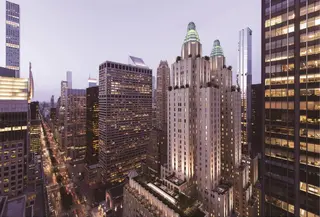
- Condo built in 1931
- Converted in 2025
- 28 apartments currently for sale ($1.875M to $16.875M)
- 2 apartments currently for rent ($12.5K)
- Located in Midtown East
- 375 total apartments 375 total apartments
- 10 recent sales ($1.6M to $6.4M)
- Doorman
- Pets Allowed

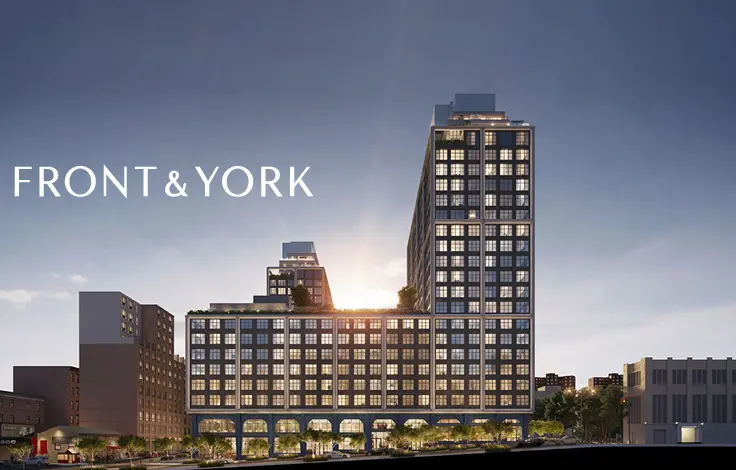
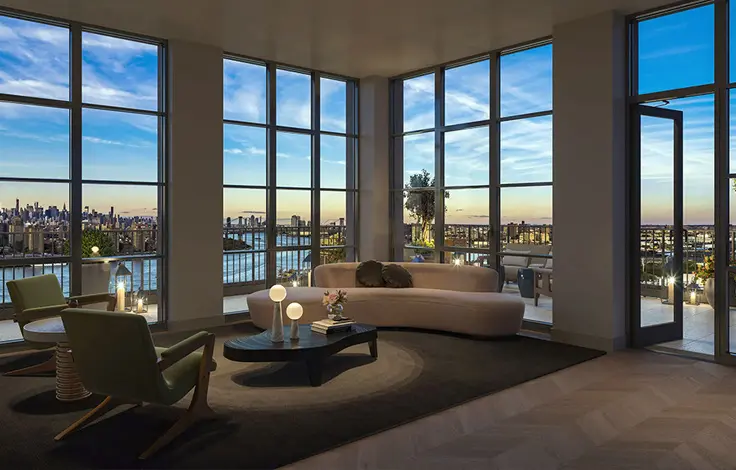

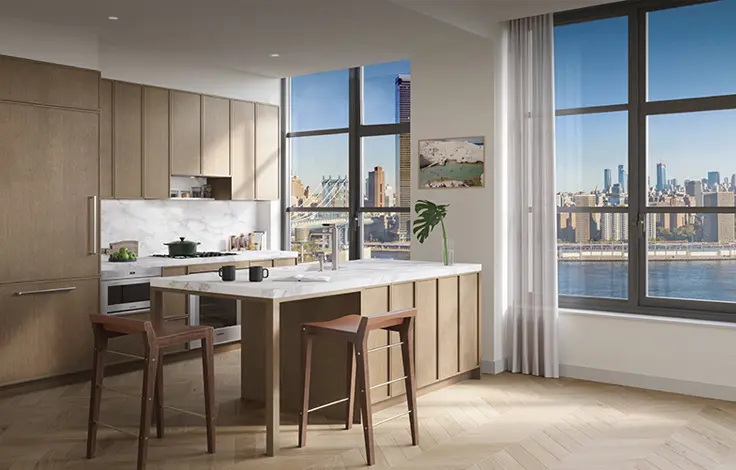
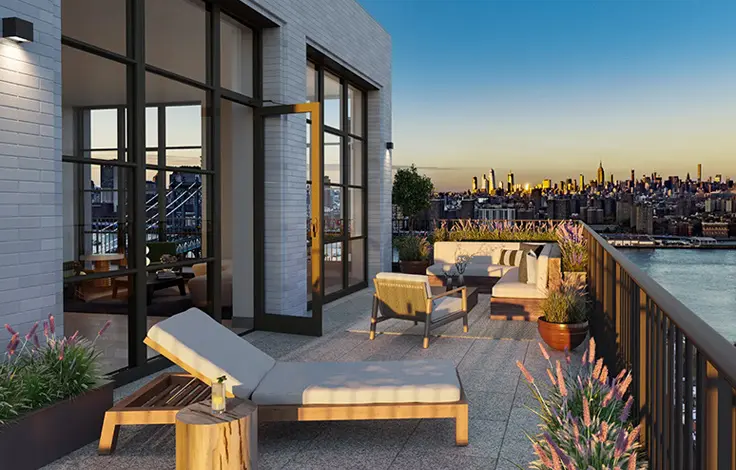
 6sqft delivers the latest on real estate, architecture, and design, straight from New York City.
6sqft delivers the latest on real estate, architecture, and design, straight from New York City.
